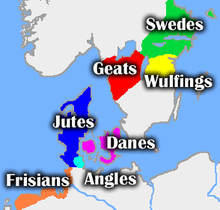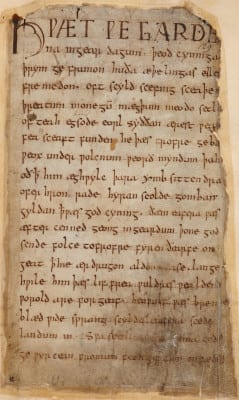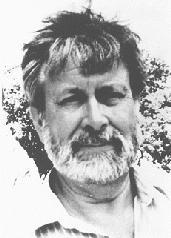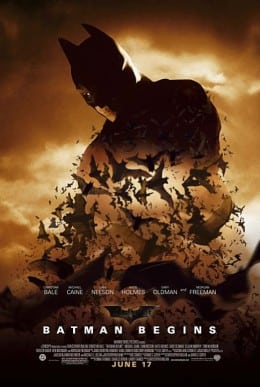 This year I hope to read every book that Aubrey and Anjuli’s school teachers assign to them with the exception of their text books. To meet this goal I got a list from each of their English teachers on parents night, went to the local bookstore, and bought dozens of books that are now stacked a few feet high on one of the nightstands by my bed.
This year I hope to read every book that Aubrey and Anjuli’s school teachers assign to them with the exception of their text books. To meet this goal I got a list from each of their English teachers on parents night, went to the local bookstore, and bought dozens of books that are now stacked a few feet high on one of the nightstands by my bed.
As part of the 7th grade curriculum covering the Medieval period, BEOWULF was selected to support student learning and was among one of the first books I tackled.
 To ground you with some background on BEOWULF, it helps to understand that it offers readers both fictional elements, as well as real historic events. It is the oldest surviving long poem in Old English and is often cited as one of the most important works of Old English literature. BEOWULF was written in England between the 8th and 11th century by an anonymous poet. Because the original manuscript had no title, over time the story came to be called BEOWULF after the protagonist.
To ground you with some background on BEOWULF, it helps to understand that it offers readers both fictional elements, as well as real historic events. It is the oldest surviving long poem in Old English and is often cited as one of the most important works of Old English literature. BEOWULF was written in England between the 8th and 11th century by an anonymous poet. Because the original manuscript had no title, over time the story came to be called BEOWULF after the protagonist.
BEOWULF is set in Scandinavia and includes a number of clans from all over northern Europe including the Geats, Jutes, and Frisians, for example. So it was a little confusing to follow where the clans resided or what territory they controlled until I found a map online to better plant me in Beowulf’s world.
 Truth be told, this was my first time reading any version of BEOWULF and I’m glad I did until I went online and read reviews of Nye’s new telling. According to a minority of the reviewers, Nye’s version does not “reflect the original text” of BEOWULF, nor does Nye “embrace the themes from the original manuscript.”
Truth be told, this was my first time reading any version of BEOWULF and I’m glad I did until I went online and read reviews of Nye’s new telling. According to a minority of the reviewers, Nye’s version does not “reflect the original text” of BEOWULF, nor does Nye “embrace the themes from the original manuscript.”
In Nye’s defense he does state on the very first page of his new telling that “there are literal versions of BEOWULF. I have not tried to compete with them. This is an interpretation, not a translation.” So for the naysayers out there, Nye gives his readers a disclaimer, as well as why and how his telling came about. The cover title also states “New Telling” which should clue potential buyers.
 Personally, I enjoyed Nye’s story, especially the thread regarding the bees. It came full circle for me by story end. The bee thread also reminded me of the-overcoming-fear role the bats played in the Batman Begins movie when Bruce Wayne sheds his childhood fear of bats and actually leverages them as an adult to accomplish his mission of doing good for Gotham. Given that Beowulf means ‘bee wolf’, it was satisfying as a reader to watch Beowulf not only overcome his fear of bees, but to embrace it. As a storyteller, it makes logical sense to bring in and develop the bee thread. Anything otherwise would seem remiss and a lost opportunity. So I get why Nye developed the ‘bee wolf’ symbol in Beowulf’s journey.
Personally, I enjoyed Nye’s story, especially the thread regarding the bees. It came full circle for me by story end. The bee thread also reminded me of the-overcoming-fear role the bats played in the Batman Begins movie when Bruce Wayne sheds his childhood fear of bats and actually leverages them as an adult to accomplish his mission of doing good for Gotham. Given that Beowulf means ‘bee wolf’, it was satisfying as a reader to watch Beowulf not only overcome his fear of bees, but to embrace it. As a storyteller, it makes logical sense to bring in and develop the bee thread. Anything otherwise would seem remiss and a lost opportunity. So I get why Nye developed the ‘bee wolf’ symbol in Beowulf’s journey.
 Is it disappointing to learn that I haven’t really read the real BEOWULF?
Is it disappointing to learn that I haven’t really read the real BEOWULF?
Yes, but as a young adult author and mother, I’m more thrilled to hear Anjuli rave about the story Nye has written without my prompting. At her age, the joy of reading is more important to me than becoming a scholar on BEOWULF. Should she decide to major in Old English Literature, she will most certainly have a chance to read a truer translation of BEOWULF than the one she is currently reading. Until then, I plan on letting her enjoy the reading process in the same way I give Santa Claus all of the credit on Christmas morning year after year.


